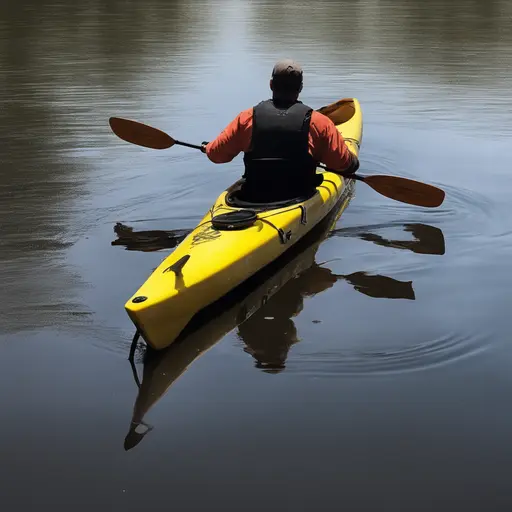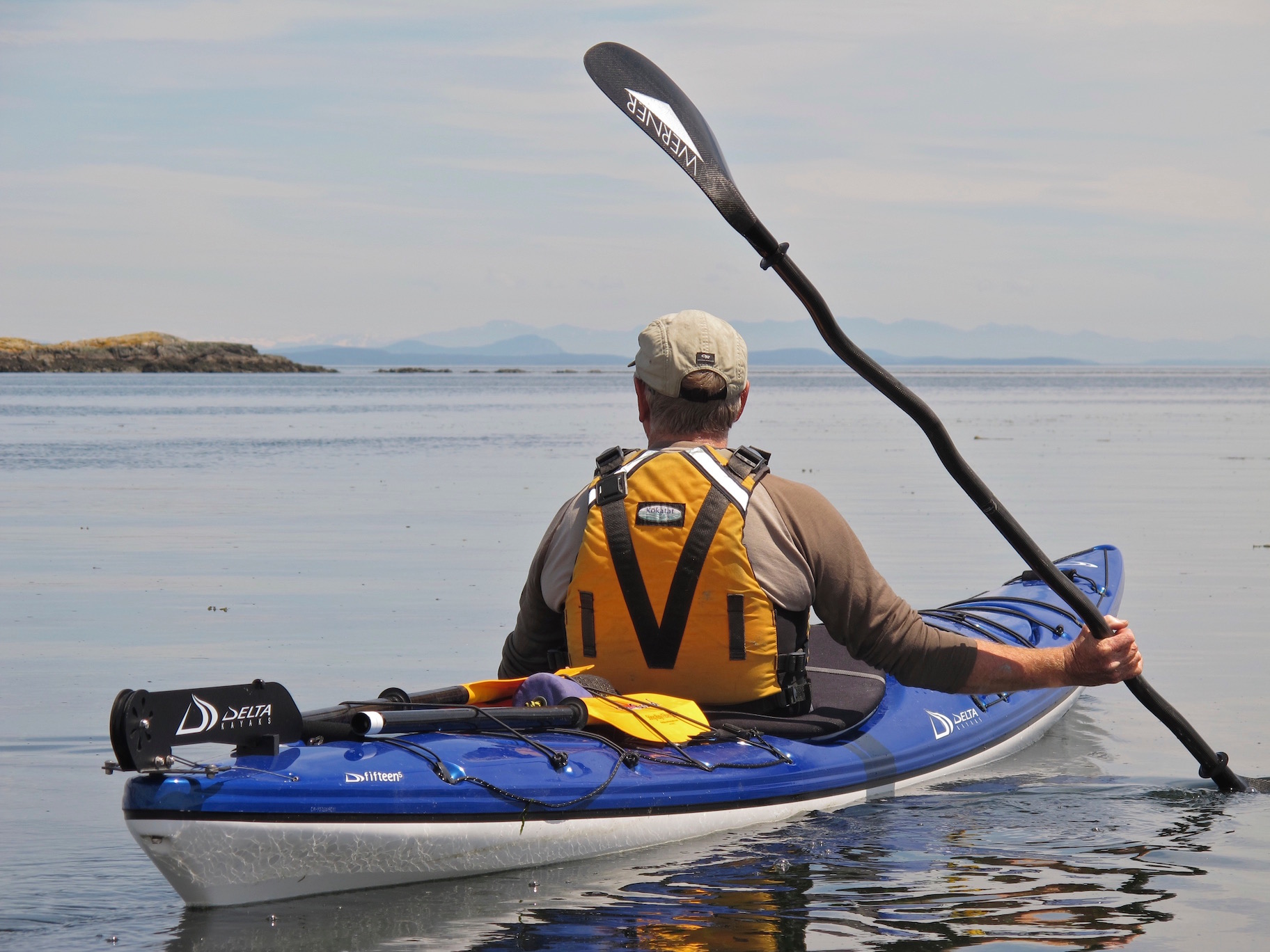Kayaking is a popular water activity enjoyed by enthusiasts around the world. Whether for recreation, sport, or adventure, kayaking offers a unique and immersive way to experience nature and water bodies. One crucial component of a kayak that often sparks curiosity is the skeg. In this article, we will delve into the world of kayaking and explore the concept of what is a skeg on a kayak, its purpose, benefits, and how it influences the performance of a kayak.
What is a Skeg on a Kayak?

Defining a Skeg
A skeg is a small, fin-like structure that extends downward from the hull of a kayak, typically near the stern (rear) of the boat. Unlike a rudder, which can be steered, a skeg remains fixed in place but can be deployed or retracted as needed. Skegs are commonly found in various types of kayaks, including sea kayaks and touring kayaks, and they play a crucial role in improving the kayak’s performance under different conditions.
Skeg vs. Rudder: Understanding the Difference
While both skegs and rudders are designed to assist with a kayak’s tracking and stability, they function differently:
- Skeg: As mentioned earlier, a skeg is a stationary fin that extends downward from the kayak’s hull. It helps the kayak maintain a straight course by reducing the effects of crosswinds and currents. Skegs are generally simpler in design and operation than rudders.
- Rudder: A rudder is a movable surface typically located at the stern of the kayak. It can be controlled by the paddler using foot pedals. A rudder can be turned from side to side to steer the kayak. While rudders offer enhanced maneuverability, they can also introduce more complexity to the kayak’s setup.
The Purpose of a Skeg
Tracking and Stability
One of the primary purposes of a skeg is to improve a kayak’s tracking and stability. Tracking refers to the kayak’s ability to maintain a straight line without constant correction from the paddler. In windy conditions or when paddling against currents, a kayak with a skeg is less likely to veer off course. The skeg counteracts the forces that might cause the kayak to drift or turn.
Wind and Current Correction
When kayaking in open water or encountering varying wind and current conditions, it’s common for a kayak to experience weathercocking or lee cocking. Weathercocking occurs when the bow of the kayak (front) points into the wind, causing the kayak to turn downwind. Lee cocking, on the other hand, results in the kayak turning upwind. A skeg can be partially deployed to counteract these tendencies, helping the kayak maintain a more predictable and controlled heading.
How Does a Skeg Work?
Deployment and Adjustment
Skegs are designed to be adjustable, allowing paddlers to fine-tune their performance based on the conditions. By partially deploying the skeg, the paddler can control the amount of resistance the skeg generates against crosswinds and currents. This adjustability is particularly valuable when encountering different wind and water scenarios during a kayaking trip.
Retraction and Stowage
When not needed, the skeg can be fully retracted, tucked neatly against the kayak’s hull. This minimizes drag and ensures the kayak maintains its maneuverability in calm waters or situations where the skeg’s assistance isn’t necessary. Many kayaks feature simple mechanisms for deploying and retracting the skeg, often controlled by a slider or lever within arm’s reach of the paddler.
Benefits of Using a Skeg
Improved Tracking
The primary benefit of a skeg-equipped kayak is enhanced tracking. Paddlers can enjoy a more straightforward and less effort-intensive paddling experience, especially during long journeys or in challenging conditions. The skeg’s ability to counteract unwanted turning helps maintain a steady course.
Enhanced Maneuverability
While skegs are primarily associated with tracking, they can also enhance maneuverability to a certain extent. When partially deployed, a skeg can be used to fine-tune the kayak’s responsiveness to turning strokes. This allows paddlers to strike a balance between tracking and maneuvering, giving them more control over their kayak’s behavior.
Efficiency in Challenging Conditions
Kayaking in windy or rough water conditions can be physically demanding and mentally taxing. A skeg-equipped kayak reduces the need for constant course corrections, allowing the paddler to focus more on enjoying the journey and less on fighting against external forces.
Skeg or Rudder: Which One to Choose?
Skeg and Rudder Combinations
Some kayaks are designed with the option of having both a skeg and a rudder. This offers paddlers the flexibility to choose the control mechanism that best suits their needs based on the conditions they encounter. For example, a rudder might be preferable when navigating narrow passages or performing advanced maneuvers.
Personal Preference and Skill Level
The choice between a skeg and a rudder ultimately comes down to personal preference and skill level. While rudders offer more direct control over steering, skegs are favored for their simplicity and reliability. Novice paddlers might find skegs easier to understand and operate, while experienced kayakers may appreciate the finesse and versatility of a rudder.
Maintaining Your Skeg
Cleaning and Inspection
Proper maintenance of your kayak’s skeg is essential to ensure its optimal performance. After each kayaking session, rinse the skeg with freshwater to remove salt and debris. Regularly inspect the skeg for any signs of damage, corrosion, or loose components. Addressing issues early can prevent more significant problems down the line.
Lubrication and Replacement
If your kayak’s skeg features moving parts or hinges, applying a light coat of marine-grade lubricant can help maintain smooth operation. Additionally, if you notice excessive wear, damage, or rust, it might be necessary to replace parts of the skeg system. Consult your kayak’s manufacturer or a professional for guidance on proper maintenance and replacement.
Conclusion
In the world of kayaking, a skeg serves as a valuable tool to enhance a paddler’s experience by providing better tracking and stability in varying water and weather conditions. Understanding how a skeg works, its benefits, and when to use it can significantly contribute to a safer and more enjoyable kayaking journey. Whether you’re a beginner exploring
calm waters or an experienced paddler taking on challenging environments, the presence of a skeg can be the difference between a smooth glide and a struggle against the elements. By integrating this unassuming fin into your kayaking arsenal, you open the door to new adventures and a deeper appreciation for the art of kayaking.
For additional guidance on kayaking-related topics, such as building a homemade kayak launch, getting into a kayak, and transporting a kayak, refer to these helpful resources:
- How to Build a Homemade Kayak Launch
- How to Get in a Kayak
- How to Transport a Kayak
- What is a Tandem Kayak?

Hi, I’m Steve, the passionate kayaking enthusiast behind Outdoor Bravo. As an avid adventurer and nature lover, kayaking has been a central part of my life for as long as I can remember. My love affair with the water began during my childhood, and it has only grown stronger over the years. From serene lakes to rushing rivers and even challenging ocean tides, I’ve navigated various water bodies, seeking new thrills and unforgettable experiences.
